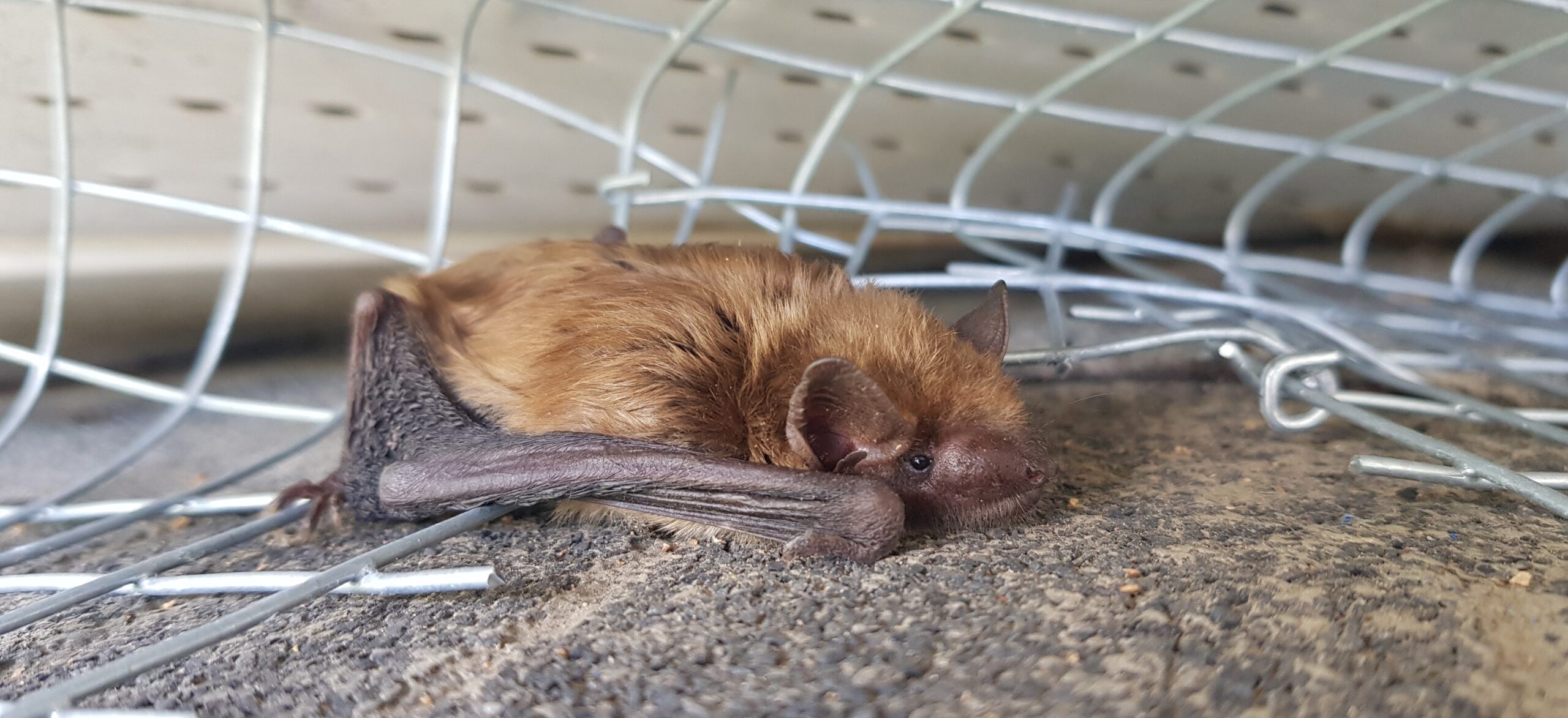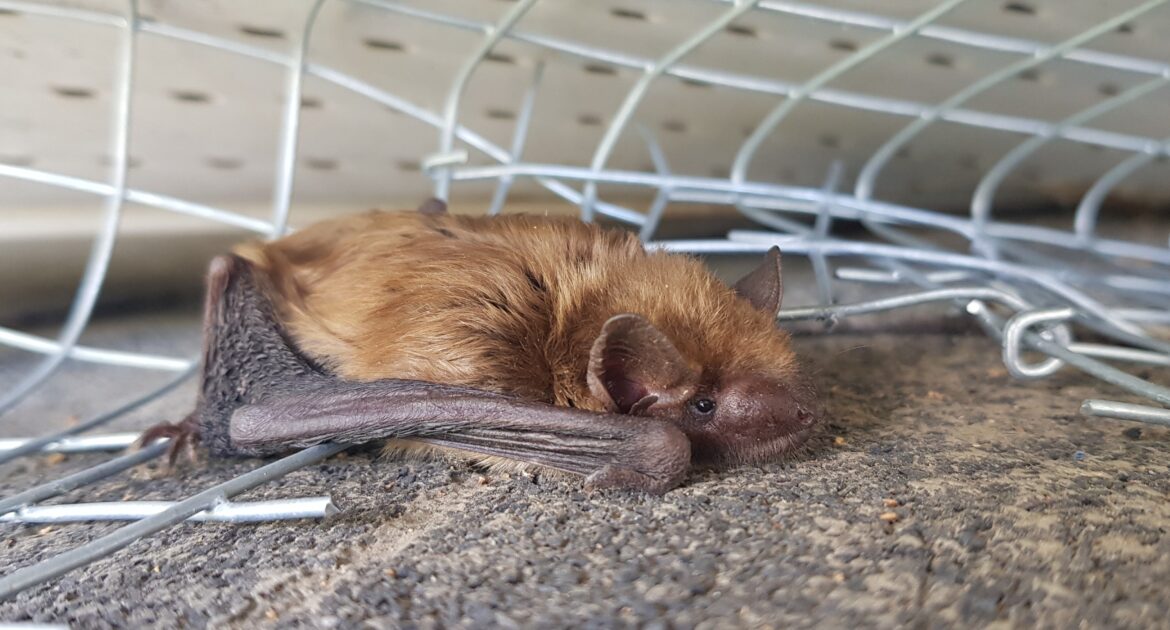You step outside on a crisp autumn evening, and the air feels different. The leaves are falling, the nights are cooler, and somewhere nearby, a small winged animal is searching for a warm place to rest.
Have you ever wondered where bats go in the fall to keep warm?
These fascinating creatures don’t just disappear—they have unique habits that help them survive the colder seasons. From bat hibernation in autumn to their migration habits, these animals are experts at finding the perfect spot to stay cozy.
In Thornhill, many bats choose to stay local, seeking out warm, quiet spaces like attics, old buildings, or even caves. Others migrate to find better conditions, travelling hundreds of kilometres. Wherever they go in the fall, their goal is the same: to find a safe, warm place to hibernate.
At Skedaddle Humane Wildlife Control in Thornhill, we understand how these habits can sometimes bring bats a little too close to home—your home. That’s why we’re here to help you protect your space while respecting these incredible animals.
In this post, we’ll explore how bats prepare for the colder months, where they go, and why your home might look like the perfect winter retreat to them. We’ll also share how our team at Skedaddle uses humane methods to safely guide bats out of your home and keep them from coming back.
Let’s dive into the fascinating world of bat hibernation in autumn and what it means for homeowners in Thornhill.
Why These Flying Animals Need Warm Places
Cold weather spells trouble for our flying friends. Unlike furry animals that can grow thicker coats, these creatures have thin wing membranes that don’t hold heat well. Their small bodies lose warmth quickly when temperatures drop.
You should know that these animals can’t make their own body heat like we can during winter. Instead, they must find ways to stay warm without using much energy. This is why bat hibernation in autumn is so important for their survival.
When fall arrives, these creatures face a big problem. The bugs they love to eat start disappearing. Flying around looking for food uses too much energy when there’s not much to find. Smart animals that they are, they solve this problem by going into a deep sleep called hibernation.
Different Types and Where They Go
Not all flying creatures handle autumn the same way. Some types travel hundreds of miles to find the perfect winter home. Others might only fly a few miles from their summer roosts.
Long-distance travellers include:
- Hoary types that can fly up to 1,000 miles
- Silver-haired varieties that travel south to warmer states
- Red species that migrate like tiny birds
Local homebodies prefer:
- Big brown varieties that stay close to home
- Little brown types that look for nearby caves
- Northern long-eared species that find local hiding spots
The animals that stay local often cause the most problems for homeowners in Thornhill. These creatures look for warm buildings, attics, and wall spaces to spend their winter months.
Perfect Winter Hideouts
You might wonder what makes a good winter home for these flying animals. They’re quite picky about where they spend their long winter sleep. The perfect spot needs to meet several important needs.
Temperature matters most. These creatures need places that stay above freezing but aren’t too warm. If it’s too cold, they could freeze. If it’s too warm, they wake up too often and use up their stored energy.
Ideal winter homes have:
- Steady temperatures between 2-10°C
- High humidity keeps their wing membranes moist
- Protection from wind and weather
- Few disturbances from people or other animals
- Easy ways to get in and out
Caves make perfect natural winter homes. The temperature stays steady, and there’s plenty of humidity. Old mines work well, too. But in places like Thornhill where natural caves are rare, these animals get creative.
Why Your Home Looks Good to Them
Your house might seem like a perfect winter hotel to these flying visitors. Attics, wall spaces, and unused buildings offer many of the things they need. Warm houses with small openings look especially inviting.
These clever animals can squeeze through gaps as small as a nickel. That tiny space under your roof shingle or that small hole near your chimney looks like a welcome sign to them. Once inside, they find warm, quiet spaces perfect for their long winter sleep.
Common entry points include:
- Loose roof shingles
- Gaps around chimneys
- Openings where pipes enter walls
- Broken screens or vents
- Small holes in the siding
Understanding bat migration habits helps explain why they choose certain homes. These animals remember good winter spots and often return to the same places year after year.
The Hibernation Process
Bat hibernation in autumn is truly amazing. These animals can slow their hearts from 400 beats per minute to just 25 beats per minute. Their breathing almost stops completely. This incredible process lets them survive months without eating.
Before going into hibernation, these creatures eat as much as possible. They build up fat stores that must last all winter long. Some animals can double their body weight preparing for their long sleep.
You should know that hibernating animals aren’t completely asleep. They wake up every few weeks to drink water and sometimes move to different spots. This is normal and helps them survive the long winter months.
When Spring Arrives
As winter ends, these animals slowly wake up from their deep sleep. This process takes time, and they’re often quite weak when they first emerge. They need to find food quickly to regain their strength.
Where these animals go in the fall determines how easily they can find spring food sources. Those that chose good winter homes near summer feeding areas have the best chance of survival.
Spring awakening happens gradually in Thornhill. You might hear more activity in your attic or walls as these creatures become more active. This is when many homeowners first realize they have winter guests.
How Professional Wildlife Control Helps
When these flying animals choose your home for their winter hibernation, professional help becomes important. At Skedaddle Humane Wildlife Control in Thornhill, we understand bat hibernation in autumn and how to handle these situations safely.
Our team uses special one-way doors that allow these animals to leave but prevent them from coming back. This humane approach respects their need for shelter while protecting your home. We also seal entry points to prevent future problems.
You should never try to handle these situations yourself. These animals can carry diseases, and disturbing hibernating creatures can harm or kill them. Professional wildlife control ensures everyone stays safe and healthy.
Your Next Step for Professional Help
Understanding bat hibernation in autumn helps you know what to expect as temperatures drop in Thornhill. These amazing flying animals have incredible survival strategies, but sometimes their winter homes conflict with yours. When bat migration habits bring these creatures to your property, professional help makes all the difference.
At Skedaddle Humane Wildlife Control in Thornhill, we’re here to help you handle any wildlife situations safely and humanely. Our experience with where these animals go in the fall means we can solve your problems while respecting these incredible creatures.
Request an estimate today to learn more about how we can help protect your home while keeping wildlife safe.




